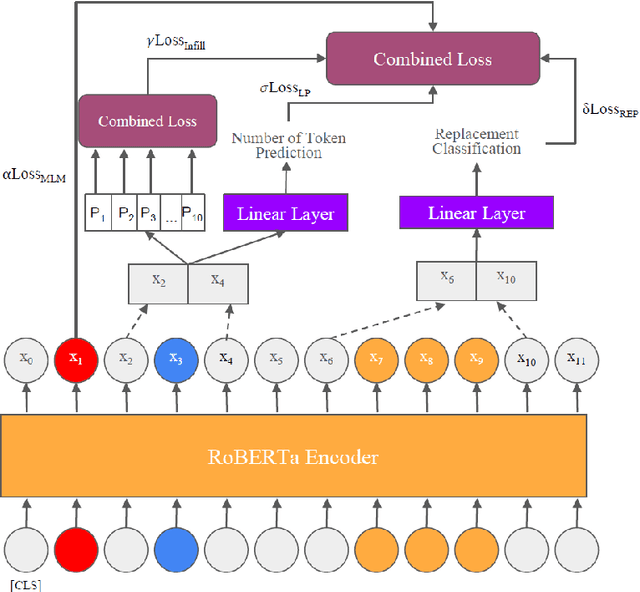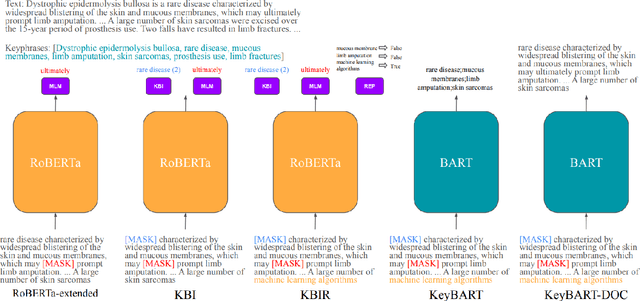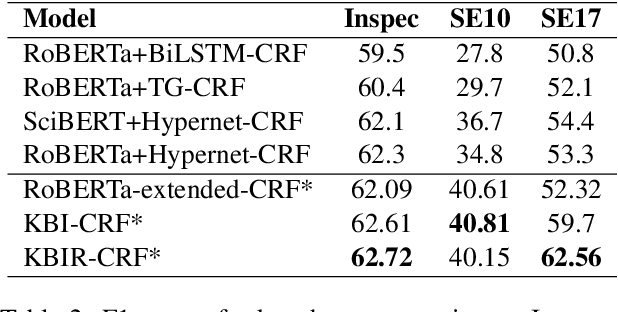Learning Rich Representation of Keyphrases from Text
Paper and Code
Dec 16, 2021



In this work, we explore how to learn task-specific language models aimed towards learning rich representation of keyphrases from text documents. We experiment with different masking strategies for pre-training transformer language models (LMs) in discriminative as well as generative settings. In the discriminative setting, we introduce a new pre-training objective - Keyphrase Boundary Infilling with Replacement (KBIR), showing large gains in performance (upto 9.26 points in F1) over SOTA, when LM pre-trained using KBIR is fine-tuned for the task of keyphrase extraction. In the generative setting, we introduce a new pre-training setup for BART - KeyBART, that reproduces the keyphrases related to the input text in the CatSeq format, instead of the denoised original input. This also led to gains in performance (upto 4.33 points in F1@M) over SOTA for keyphrase generation. Additionally, we also fine-tune the pre-trained language models on named entity recognition (NER), question answering (QA), relation extraction (RE), abstractive summarization and achieve comparable performance with that of the SOTA, showing that learning rich representation of keyphrases is indeed beneficial for many other fundamental NLP tasks.
 Add to Chrome
Add to Chrome Add to Firefox
Add to Firefox Add to Edge
Add to Edge